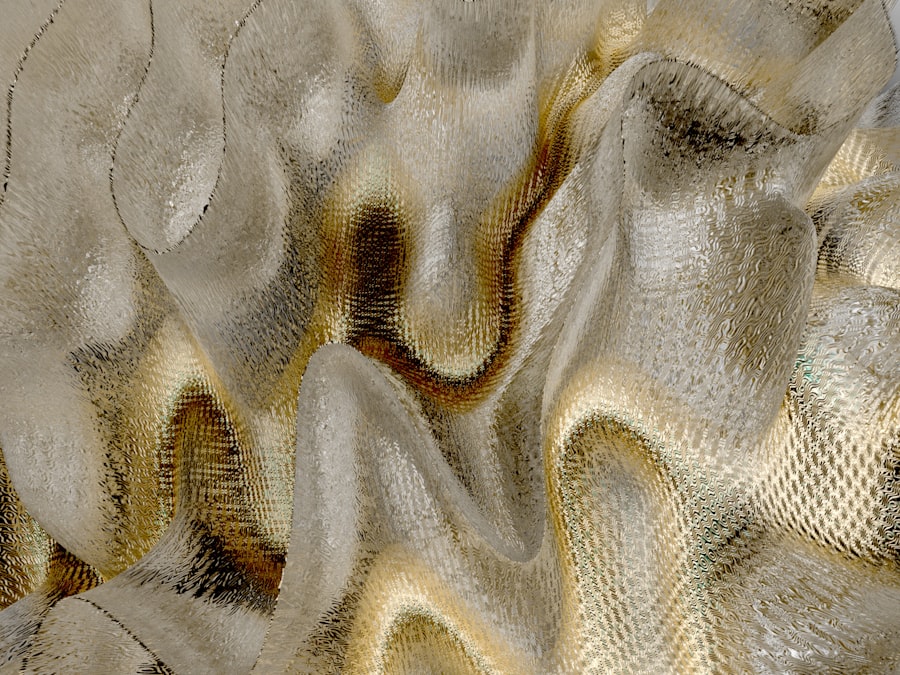Intellectual Property Rights (IPR) serve as a crucial framework for protecting the creative outputs of artists, ensuring that their original works are safeguarded from unauthorized use and exploitation. These rights encompass a variety of legal protections, including copyrights, trademarks, and patents, each designed to address different aspects of creative expression. For artists, IPR is not merely a legal formality; it is a vital tool that empowers them to maintain control over their creations, allowing them to reap the financial benefits of their labor and creativity.
The significance of IPR extends beyond mere ownership; it fosters an environment where innovation and artistic expression can flourish, encouraging artists to push boundaries and explore new ideas without the fear of infringement. In the realm of visual arts, music, literature, and performance, the implications of IPR are profound. Artists invest considerable time, effort, and resources into their work, and the ability to protect these investments is essential for their livelihood.
Copyright law, for instance, grants artists exclusive rights to reproduce, distribute, and display their works, while trademark law protects the symbols and branding associated with their creations. However, the landscape of intellectual property is continually evolving, particularly in light of technological advancements that challenge traditional notions of ownership and distribution. As artists navigate this complex terrain, understanding the nuances of IPR becomes increasingly important for safeguarding their creative legacies.
Key Takeaways
- Intellectual property rights are crucial for artists to protect their creative work and ensure they receive fair compensation for their efforts.
- Securing intellectual property rights in the digital age presents challenges due to the ease of unauthorized reproduction and distribution of digital content.
- Blockchain technology offers a decentralized and secure way to manage and protect intellectual property rights by creating an immutable record of ownership and transactions.
- Blockchain can help artists secure their intellectual property rights by providing a transparent and tamper-proof system for tracking ownership and usage of their work.
- Examples of blockchain platforms for intellectual property rights management include Mediachain, Ascribe, and Monegraph, which offer solutions for artists to register and manage their creative assets.
The Challenges of Securing Intellectual Property Rights in the Digital Age
The Ease of Infringement
The ease with which digital content can be copied and disseminated has led to widespread infringement issues. Artists often find their works reproduced without permission on various platforms, from social media to online marketplaces. This rampant unauthorized use not only undermines the financial viability of artists but also dilutes the value of their original creations.
The Challenges of Enforcement
The traditional mechanisms for enforcing intellectual property rights, such as litigation and cease-and-desist letters, can be prohibitively expensive and time-consuming, leaving many artists vulnerable to exploitation. Moreover, the global nature of the internet complicates the enforcement of intellectual property rights. Different countries have varying laws and regulations regarding copyright and trademark protections, creating a patchwork of legal frameworks that can be difficult for artists to navigate.
The Disparity in Protection
This disparity can lead to situations where artists are unable to effectively pursue legal action against infringers operating outside their home country. As a result, many artists may feel disempowered in protecting their rights in an increasingly interconnected digital landscape.
Understanding Blockchain Technology

Blockchain technology is often associated with cryptocurrencies like Bitcoin, but its potential extends far beyond financial transactions. At its core, blockchain is a decentralized digital ledger that records transactions across multiple computers in a way that ensures security and transparency. Each transaction is grouped into blocks that are linked together in chronological order, forming a chain that is immutable once established.
This decentralized nature eliminates the need for intermediaries, allowing for peer-to-peer interactions that can enhance trust and accountability. One of the defining features of blockchain is its ability to provide a verifiable record of ownership and provenance. Each entry on the blockchain is time-stamped and cryptographically secured, making it nearly impossible to alter or delete past transactions without consensus from the network participants.
This characteristic is particularly relevant for artists seeking to establish authenticity and ownership over their works. By leveraging blockchain technology, artists can create a permanent digital record that verifies their authorship and tracks the history of their creations from inception to sale.
How Blockchain Can Help Secure Intellectual Property Rights for Artists
Blockchain technology offers innovative solutions to some of the most pressing challenges faced by artists in securing their intellectual property rights. By utilizing smart contracts—self-executing contracts with the terms directly written into code—artists can automate licensing agreements and ensure that they receive fair compensation for the use of their works. For example, an artist could create a smart contract that stipulates a percentage of royalties to be paid each time their artwork is sold or displayed.
This automation reduces the administrative burden on artists and minimizes the risk of disputes over payment terms. Additionally, blockchain can enhance transparency in the art market by providing a clear chain of ownership for each piece of art. This transparency not only helps prevent fraud but also allows potential buyers to verify the authenticity of a work before making a purchase.
In an industry where provenance is paramount, having an immutable record on the blockchain can significantly increase an artist’s credibility and market value. Furthermore, by enabling fractional ownership through tokenization, blockchain allows multiple investors to own shares in high-value artworks, democratizing access to art investment while providing artists with new revenue streams.
Examples of Blockchain Platforms for Intellectual Property Rights Management
Several blockchain platforms have emerged specifically designed to address the needs of artists in managing their intellectual property rights. One notable example is Artory, which provides a secure registry for artworks on the blockchain. Artory’s platform allows artists to create digital certificates of authenticity that accompany their physical works, ensuring that buyers have access to verified information about provenance and ownership history.
This not only protects artists from counterfeiting but also enhances buyer confidence in purchasing original works. Another prominent platform is Myco, which focuses on music rights management through blockchain technology. Myco enables musicians to register their works on the blockchain, ensuring that they retain control over their intellectual property while facilitating fair royalty distribution.
By using smart contracts, Myco automates payments to artists whenever their music is streamed or downloaded, addressing one of the most significant pain points in the music industry—ensuring that creators are compensated fairly for their contributions.
The Benefits and Limitations of Using Blockchain for Intellectual Property Rights

The adoption of blockchain technology for intellectual property rights management presents numerous benefits for artists.
This security fosters trust among artists and buyers alike, as both parties can rely on an accurate record of ownership and transaction history.
Moreover, blockchain facilitates greater accessibility for artists by providing them with direct access to global markets without relying on intermediaries such as galleries or record labels. This direct-to-consumer model empowers artists to retain more control over their pricing and distribution strategies while potentially increasing their profit margins.
However, there are limitations to consider when implementing blockchain technology for intellectual property rights management. One major challenge is the complexity of navigating different blockchain platforms and understanding how they operate. Artists may require technical expertise or support to effectively utilize these systems, which could pose barriers for those who are less technologically savvy.
Furthermore, while blockchain can enhance security and transparency, it does not eliminate all risks associated with intellectual property infringement; unauthorized use can still occur if proper enforcement mechanisms are not in place.
The Future of Blockchain in Securing Intellectual Property Rights for Artists
As blockchain technology continues to evolve, its potential applications in securing intellectual property rights for artists are likely to expand further. The integration of artificial intelligence (AI) with blockchain could lead to more sophisticated tools for monitoring copyright infringement across digital platforms. AI algorithms could analyze vast amounts of online content to identify unauthorized uses of artistic works more efficiently than traditional methods allow.
This synergy between AI and blockchain could empower artists with real-time insights into how their works are being used across various channels. Moreover, as more artists adopt blockchain solutions for managing their intellectual property rights, we may witness a cultural shift towards valuing digital art forms alongside traditional mediums. The rise of non-fungible tokens (NFTs) has already begun to reshape perceptions around ownership and value in the art world by allowing digital artworks to be bought and sold as unique assets on the blockchain.
As this trend continues to gain traction, it could lead to broader acceptance of digital art as a legitimate form of creative expression deserving of protection under intellectual property laws.
The Importance of Blockchain in Protecting Artists’ Intellectual Property Rights
In an era where digital content is ubiquitous and easily replicable, securing intellectual property rights has become increasingly challenging for artists. Blockchain technology offers innovative solutions that address many of these challenges by providing secure, transparent mechanisms for managing ownership and licensing agreements. As artists continue to navigate the complexities of protecting their creative works in a rapidly changing landscape, embracing blockchain could prove essential in safeguarding their rights and ensuring fair compensation for their contributions.
The importance of blockchain in protecting artists’ intellectual property rights cannot be overstated; it represents a paradigm shift in how creative works are valued and managed in the digital age. By leveraging this technology, artists can reclaim control over their creations while fostering an environment that encourages innovation and artistic expression without fear of exploitation or infringement. As we look toward the future, it is clear that blockchain will play a pivotal role in shaping the landscape of intellectual property rights management for artists around the world.
In a recent article on enicomp.com, the importance of securing intellectual property rights for artists through blockchain technology was discussed. This innovative approach not only protects the work of creators but also ensures fair compensation for their efforts. For more information on the latest technology trends, you can check out their article on the best Huawei laptop for 2023.
FAQs
What is blockchain technology?
Blockchain technology is a decentralized, distributed ledger that records transactions across many computers in such a way that the registered transactions cannot be altered retroactively.
How does blockchain secure intellectual property rights for artists?
Blockchain secures intellectual property rights for artists by providing a transparent and immutable record of ownership and transactions. This helps in preventing unauthorized use or reproduction of the artist’s work.
What are the benefits of using blockchain for securing intellectual property rights?
Some benefits of using blockchain for securing intellectual property rights include transparency, immutability, and the ability to track ownership and usage of the artist’s work.
Can blockchain be used to enforce copyright and licensing agreements for artists?
Yes, blockchain can be used to enforce copyright and licensing agreements for artists by providing a secure and transparent platform for recording and verifying ownership and usage rights.
Are there any challenges or limitations to using blockchain for securing intellectual property rights for artists?
Some challenges and limitations of using blockchain for securing intellectual property rights for artists include the complexity of the technology, potential scalability issues, and the need for widespread adoption and standardization.

